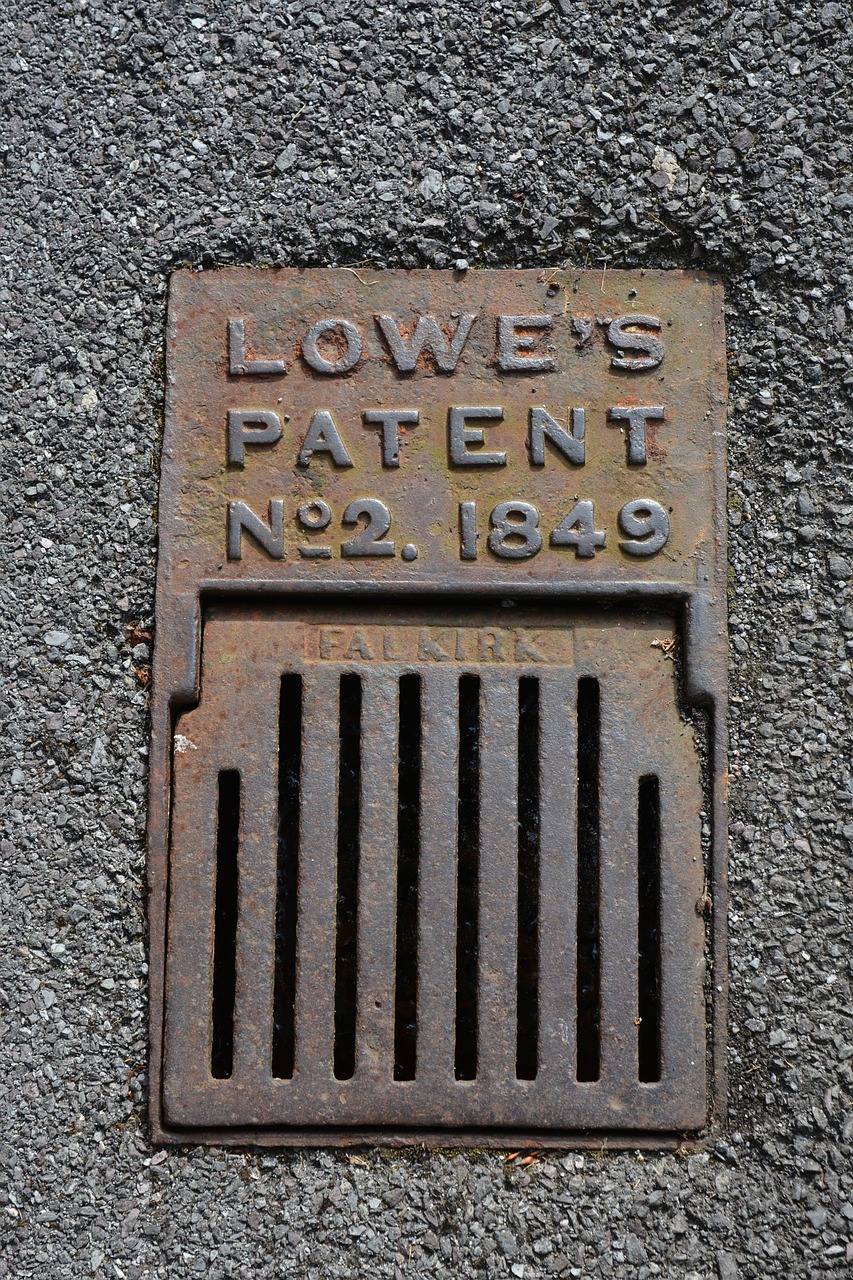
In today’s fast-paced entrepreneurial landscape, understanding how to protect your innovations is essential for your startup’s success. Intellectual property (IP) plays a pivotal role in safeguarding your creative ideas, ensuring that your hard work pays off in the long run. As you navigate your startup journey, you’ll need to familiarize yourself with key components like startup patents, trademarks, and copyright basics. This comprehensive guide will walk you through the various types of IP protection available, provide actionable steps to file a patent application or trademark, and explore the differences between open source and patent strategies. By empowering yourself with this knowledge, you can secure a strong foundation for your startup’s innovative potential.
Types of Intellectual Property Protection
When you embark on the journey of innovation, understanding the various types of intellectual property protection available is crucial for safeguarding your ideas and creations. The three primary forms of intellectual property protection—patents, trademarks, and copyrights—each serve unique purposes and are essential to fortifying your startup’s competitive edge. Here’s a breakdown of these crucial protections:
| Type | Description | Duration of Protection | Key Features |
|---|---|---|---|
| Patent | A legal right granted for an invention, providing the inventor exclusive control to produce, use, and sell their invention for a specific period. | Typically 20 years from filing (utility patents); design patents protect for 15 years. | Protects functional aspects and technical innovations. |
| Trademark | A recognizable sign, design, or expression that identifies products or services of a particular source. | Indefinite, as long as you continue to use the mark and renew it. | Protects brand identity and prevents others from using a similar mark. |
| Copyright | A form of protection grounded in the U.S. Constitution and granted by law for original works of authorship. | Life of the author plus 70 years; corporate authorship varies. | Protects the expression of ideas, such as art, music, and literature, but not the idea itself. |
Understanding Patents
Filing a patent application is particularly important for startups as it secures your right to exclusive use of your invention, whether it be a product, process, or improvement. There are two main types of patents: utility patents, which cover new inventions or functional improvements, and design patents, which protect the new visual attributes of an object. Applications require a detailed description of your invention, including claims that outline what aspects are protected.
Importance of Trademarks
A trademark safeguards your brand identity. It’s critical for startups to distinguish their products or services in a crowded marketplace. Registering a trademark involves choosing a unique mark—like a word, logo, or slogan—and filing it with the appropriate government agency. This means that no one else can legally use a mark that is identical or confusingly similar to yours in the same industry, protecting your established reputation from infringement.
Securing Copyrights
Copyright is a vital form of protection for startups that rely on creative content, such as software, educational materials, and marketing assets. Unlike patents and trademarks, copyright protection is automatic upon the creation of your work, though registering it can provide additional legal benefits in enforcement. It ensures that creators can control how their work is used and shared, which is pivotal when expanding your reach and maintaining uniqueness in the market.
By understanding and utilizing these types of intellectual property protection, you can build a robust legal framework around your innovations. This knowledge not only safeguards your creations but also enhances their value in negotiations and funding opportunities, making it easier to attract investors and grow your startup.

Steps to File a Patent or Trademark
Filing a patent or trademark is a critical step in protecting your innovations as a startup. Whether you’re securing a patent application for a groundbreaking invention or a trademark for your brand identity, there’s a structured approach you can follow. Below are detailed steps to guide you through these processes effectively.
1. Conduct Thorough Research
Before you begin the application process, it’s essential to understand what you’re protecting. Perform a detailed search on existing patents and trademarks to ensure yours is unique. Utilize resources such as the United States Patent and Trademark Office (USPTO) database and other online patent search tools. This step helps minimize the risk of infringement issues down the line.
2. Identify the Type of Protection Needed
Understanding the type of intellectual property you need is crucial. A patent protects inventions, while a trademark safeguards brand names and logos. Determine if your creation requires a utility patent, design patent, or if it warrants trademark registration. Each type has different requirements and implications for protection. The following table summarizes the key types of protection:
| Type | Protection Provided | Duration |
|---|---|---|
| Patent | Invention from unauthorized use | Generally 20 years |
| Trademark | Brand identity from misuse | Indefinite, renew every 10 years |
| Copyright | Creative works like software and art | Generally life of the author + 70 years |
3. Prepare the Application Materials
For patents, gather all technical documentation, including drawings, specifications, and a clear explanation of how your invention works. For trademarks, prepare the logo or brand name, along with proof of its usage in commerce. Be thorough; incomplete applications can lead to significant delays or denials.
4. File the Application
With your materials ready, you can file your application through the respective government office. For patents, this is generally the USPTO, while trademarks can also be filed through the USPTO’s Trademark Electronic Application System (TEAS). Pay close attention to the specific forms and fees required for your application to ensure compliance.
5. Respond to Office Actions
After filing, your application will undergo examination. You may receive Office Actions from the USPTO requiring clarifications or modifications to your application. Respond promptly and appropriately, as failure to address these issues may lead to rejection.
6. Maintain Your Intellectual Property Rights
Once granted, it’s crucial to keep track of maintenance fees and deadlines. For patents, you may need to pay maintenance fees at designated intervals to keep your patent in force. For trademarks, renewals are required to maintain protection. Ignoring these obligations can lead to losing your legal protections.
By following these structured steps, you can effectively navigate the filing process for patents and trademarks, ensuring that your innovations are well protected under intellectual property law. These protective measures not only safeguard your concepts but also enhance your credibility with investors and partners in the competitive startup landscape.
Open Source vs. Patent Strategies
Navigating the landscape of innovation can be challenging for startups, especially when deciding between adopting an open-source approach or pursuing a patent application strategy. Each option has its unique benefits and potential pitfalls. Understanding these differences can help you make informed choices that align with your business goals.
Open Source Strategy
An open-source model allows you to share your software or innovation freely, inviting collaboration from other developers while promoting transparency and community engagement. This strategy can accelerate product development, foster innovation, and create a user base that spreads your technology beyond its initial reach. Being open source often enhances user trust and loyalty, making it easier to gather feedback and improve your product through collective input.
However, giving away your innovations can be a double-edged sword. While open-source projects can lead to increased adoption, there’s a risk that competitors may leverage your ideas without compensation. This approach also lacks the legal protections that come with a patent, meaning your intellectual property could be copied or modified without your consent.
Here’s a straightforward comparison to consider when evaluating these strategies:
| Criteria | Open Source Strategy | Patent Strategy |
|---|---|---|
| Control | Less control over the use of your innovation. | Full control; exclusivity in using the invention. |
| Cost | Typically lower initial costs. | Can be expensive and time-consuming due to filing fees and legal assistance. |
| Revenue Generation | Revenue primarily through support or services. | Potential for royalties and licensing fees. |
| Market Reach | Fast user uptake and community development. | Slower to penetrate markets while legal issues are resolved. |
| Legal Protection | No exclusive rights; competitors can use your innovations. | Exclusive rights to prevent unauthorized use by others. |
Patent Strategy
On the other hand, a patent application secures exclusive rights to your invention for a specific period (usually 20 years), enabling you to prevent others from making, using, or selling your invention without your permission. This exclusivity can provide a competitive edge, allowing you to establish a strong market position and generate significant revenue through licensing agreements.
However, obtaining a patent can require substantial investment upfront and a significant time commitment. Startups often face challenges during the patent approval process, especially concerning the clarity of their intellectual property claims. Moreover, the patent landscape is fraught with complexity, necessitating thorough prior art searches and possibly facing litigation over patent infringement. Thus, it is crucial to ensure that the innovation is novel and meets all criteria before filing.
Conclusion
In conclusion, the decision between open-source and patent strategies depends significantly on your business vision and objectives. If fostering community and rapid innovation is your focus, an open-source model may suit your needs. Conversely, if you aim to secure your innovations and leverage them for profitability, a well-structured patent strategy might be the best path forward. Ultimately, aligning your chosen strategy with your long-term vision and business goals will be critical for your startup’s success.
Frequently Asked Questions
What is a patent and how does it protect innovation?
A patent is a legal right granted by a government authority that gives the inventor exclusive rights to their invention for a limited period, usually 20 years from the filing date. This legal protection means that others cannot make, use, sell, or distribute the patented invention without permission. By securing a patent, you protect your innovation from competitors, ensuring that your investment in research and development is safeguarded. It allows you to create a competitive advantage in the marketplace by controlling how your invention is used.
What steps should I take before filing a patent application?
Before filing a patent application, it’s critical to conduct a comprehensive patent search to ensure that your invention is novel and non-obvious. Additionally, you should compile detailed documentation outlining how your invention works, its technical aspects, and any unique features. Consulting with a patent attorney at this stage can significantly help to guide you through the legal requirements and ensure your application meets the necessary criteria. Consider also preparing a provisional application if you need to secure a filing date while you refine your invention.
How can patents enhance a startup’s value and attract investors?
Patents can considerably enhance a startup’s value by acting as tangible assets that demonstrate innovation and market potential. They assure investors that the startup possesses unique intellectual property that can’t simply be copied by competitors. Moreover, a solid patent portfolio can facilitate licensing agreements, increasing revenue streams and augmenting investor confidence during funding rounds. By establishing strong intellectual property rights, your startup showcases its commitment to innovation, making it more attractive to potential investors who are looking for businesses with competitive advantages.






